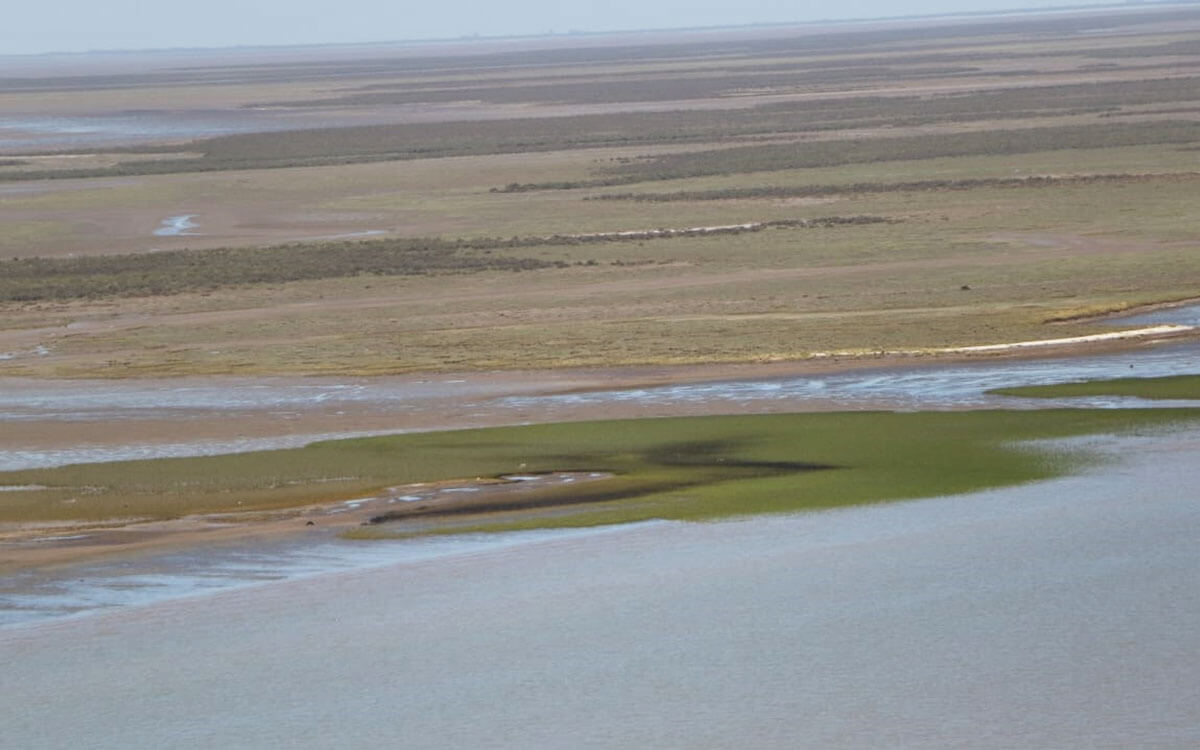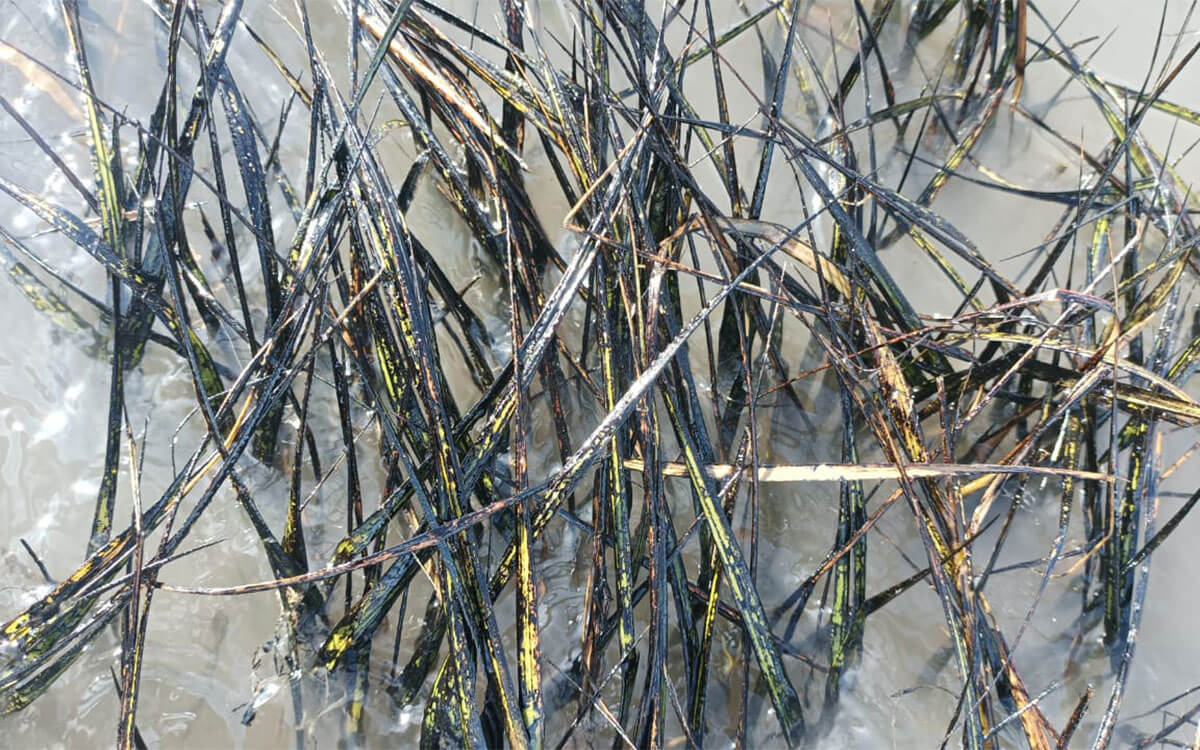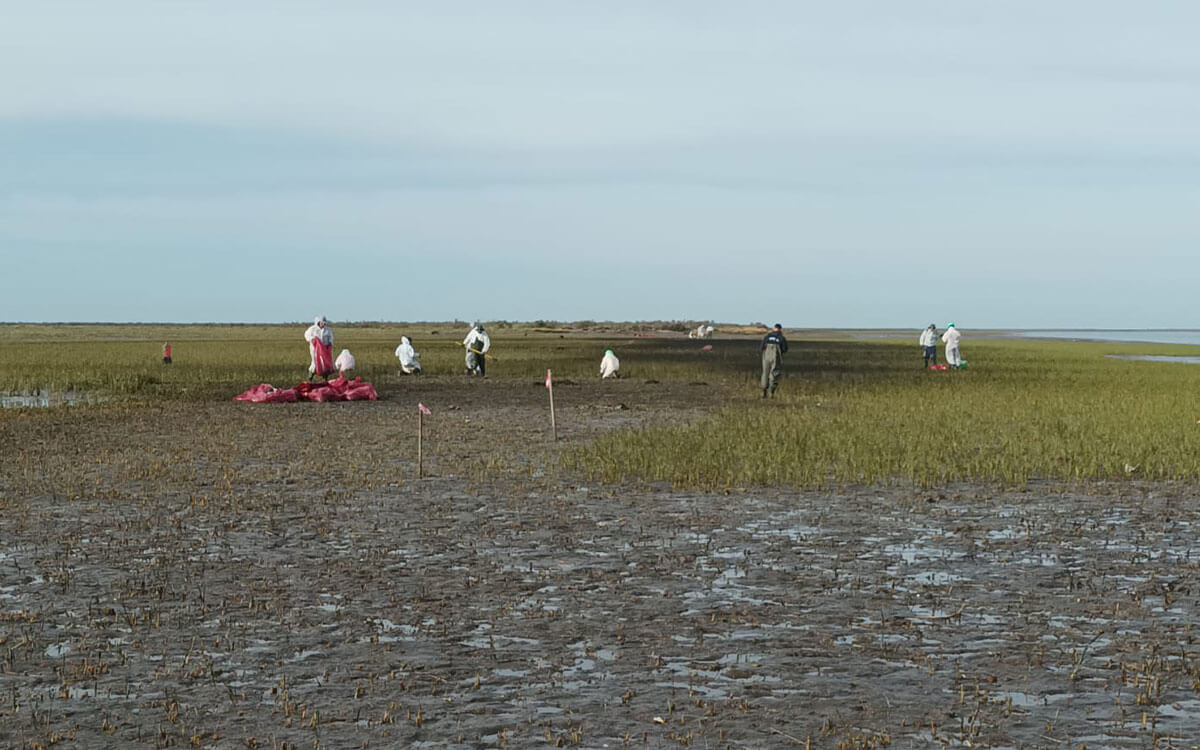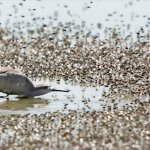By Pablo Petracci, Researcher GEKKO (Grupo de Estudios en Conservación y Manejo) Universidad Nacional del Sur, Argentina – Martín R. Sotelo, Park Ranger, Ministry of Environment, Argentina
Translated from Spanish by the WHSRN Executive Office
On December 26, 2023, the German company Oiltanking Ebytem SA caused an oil spill that was due to a technical failure in one of its buoys in the waters of the Bahía Blanca estuary, a site of Regional Importance within the Western Hemisphere Shorebird Reserve Network (WHSRN) since 2016.
The spill was several kilometers in size. Due to the company’s late activation of the alert and early containment protocols to control the spill the crude oil spread along the complex network of channels of the Bahía Blanca Provincial Nature Reserve. Bahía Falsa, and Bahía Verde, . It is important to highlight the commitment of local artisanal fishermen who alerted the authorities and quickly acted to spread the news of the spill to their networks As the information went viral, this helped to activate a response to the serious situation.


Left: Aerial view of the oil trapped in seagrass beds. Right: Seagrass covered in crude oil. Photos: Pablo Petracci.
In the days that followed, local WHSRN’s site representatives, along with technicians from the Department of Protected Areas of the Ministry of the Environment of the Province of Buenos Aires, conducted several boat trips and an overflight, which confirmed that valuable habitats for shorebirds and other marine organisms had been affected. Two main channels, Embudo and Laborde, as well as adjacent waters, were affected by the oil, which was trapped in seagrass beds for 3 and 4 kilometers, respectively. Fortunately, this retention prevented the oil from spreading to more internal and sensitive areas of the ecosystem.
The Bahía Blanca ecosystem is one of the largest systems of channels, mudflats, islands and marshes on the Argentine coast, and is home to species in serious danger of extinction. The company has been fined by the Ministry of the Environment and is facing federal and provincial criminal charges. Due to the fragility of the habitat, the cleanup will take several weeks and will be done manually by cutting down the seagrass that has retained crude oil.

Cleaning crew working manually to remove the oil. Photo: Pablo Petracci
Unfortunately, on January 17, 2024 , 23 days after the first spill, another oil spill was detected by the same company which, according to the investigation, was the result of a defective or inadequately maintained valve in another of the buoys with which it operates. Although in this case the response and containment protocols were activated much faster than in the first episode, this did not prevent the crude oil from once again affecting the natural reserve, this time in the marshes and crayfish beds of the sector known as Canal Tres Brazas. The Department of the Environment of the Province of Buenos Aires issued another violation and suspended Oiltanking’s operations as a precaution. It also requested that the National Energy Secretariat urgently review the company’s operations and ensure that it can continue to operate.
The company is also requested as soon as possible to implement the plan for the restoration of the natural sites affected by this unprecedented event of two consecutive oil spills.
It is worth mentioning that the NGO HAPIC, from the nearby town of Punta Alta, filed a criminal complaint against this company for not taking responsibility for the mitigation of a pre-existing environmental liability. As a result of a spill that had occurred in the same buoy in the 1990s, the crude oil that reached the coast was stored in hundreds of barrels and subsequently buried in the tidal areas adjacent to the Arroyo Pareja-Isla Cantarelli Wetlands WHSRN subsite. These barrels are still in place and continue to release their contaminants into the food webs of the estuary of the same name.
Oiltanking is currently completing the construction of a dock to load crude oil into supertankers from the Vaca Muerta field, one of the largest in the world. We are concerned about the potential future risks, which will increase in this new context of shipping, given the history of accidents that have occurred around the world. In this context, the coexistence between the oil industry and the conservation of coastal wetlands seems to have an uncertain future.
Cover Photo: Mixed flock of Hudsonian Godwits and Red Knots at the Bahía Blanca Estuary. Photo: Pablo Petracci.






